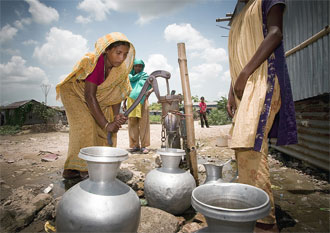President Mwai Kibaki Monday launched the Nairobi Metro 2030 Strategy and directed relevant Government organs to speedily expedite the requisite legal and institutional reforms that will facilitate the success of the strategy.
Speaking during the launch at Kenyatta International Conference Centre -KICC-, President Kibaki said his Government is putting in place strategies aimed at transforming the city of Nairobi and other major towns into vibrant centres of economic activity for the benefit of wananchi.
“Towards this end, we are according priority to urban development, and specifically Metropolitan development, as one of the driving forces that will propel our country into the status of a middle income rapidly industrializing country,” President Kibaki said.
He said the Government, under vision 2030, programmed to create and develop metropolitan regions across the country, namely Nairobi, Mombasa, Kisumu-Kakamega, Nakuru-Eldoret, Wajir-Garissa-Mandera, and Kitui-Mwingi-Meru.
The President emphasized that the identification of the metropolitan region is strategic as it is intended to play a pivotal role in the realisation of the growth targets envisaged under VISION 2030.
Said the President:” Some of these targets include promotion of social equity and inclusiveness and making our cities yield more in terms of their productive potential.”
President Kibaki pointed out that the Government’s decision to begin the implementation of the urban development strategy with the Nairobi Metropolitan region is based on the fact that the capital city is the country’s main gateway to the rest of the world.
The Head of State expressed confidence that the Nairobi Metro 2030 strategy will guide the transformation of the Nairobi Metro region into a world class metropolis and also inform decisions on a wide range of urban issues including transportation, infrastructure, housing





